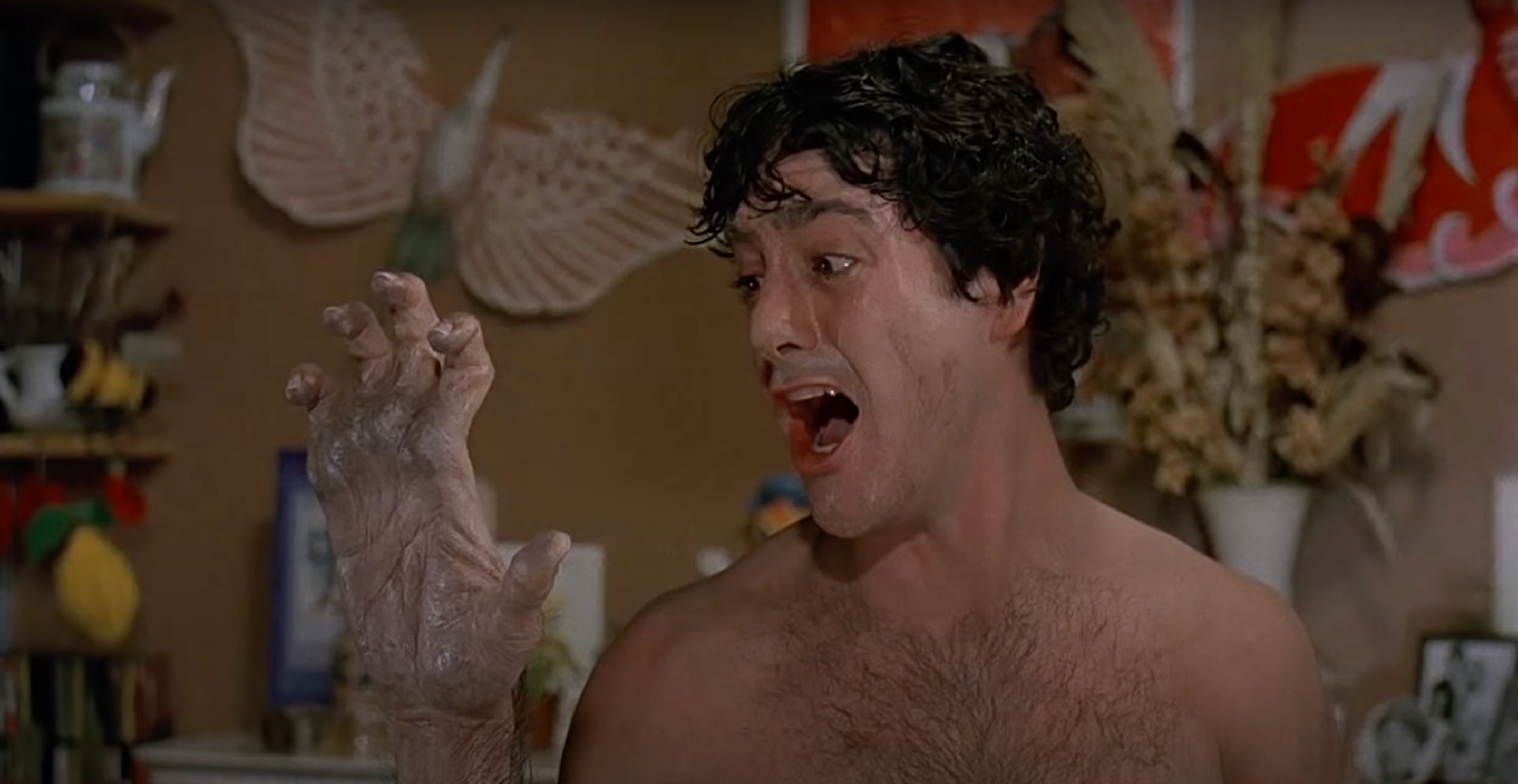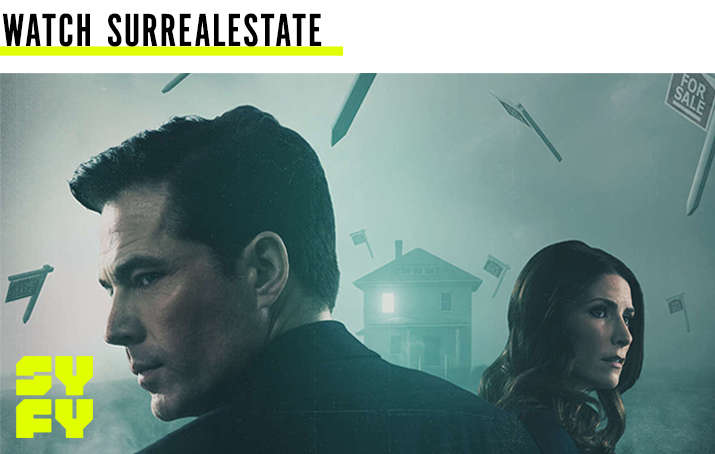Create a free profile to get unlimited access to exclusive videos, sweepstakes, and more!
The Werewolf Class of 1981: Horror experts on the 40-year staying power of four classics

When it comes to horror movie history, a lot of fans think of the early 1980s as the golden age of the slasher movie, and when you take a broad view of the genre at the time, it's easy to see why. Halloween was a runaway indie hit in 1978, giving way to the success of Friday the 13th in 1980, and by 1981 a slew of fresh imitators and innovators had followed. From Terror Train to My Bloody Valentine to Final Exam, it was a very good time for slasher fans.
But something else happened in the early 1980s horror scene, something that's still worth paying attention and homage to four decades later. In 1981, riding a wave of practical effects innovations and a renewed interest in supernatural horror after the grit of the 1970s, four filmmakers released four very different werewolf films: John Landis' An American Werewolf in London, Joe Dante's The Howling, Michael Wadleigh's Wolfen, and Larry Cohen's Full Moon High. The films are vastly different in approach, tone, and even overall plot, yet four decades later each remains a classic in its own way, making 1981 one of the most fruitful years for werewolf features in horror history.
So, how did that happen? How did 1981 become the perfect convergence point for what turned out to be four classics in the same subgenre, at a time when so many other horror filmmakers were riding the slasher wave? We reached out to some of the brightest minds in horror film criticism and history to find out.
"The short answer is technology and talent as the more overt reasoning behind the boom," Meagan Navarro, head critic and chief content creator at horror site Bloody Disgusting, tells SYFY WIRE. "John Landis wanted to make An American Werewolf in London for years; it was something he talked about with special makeup effects artist Rick Baker when they worked on Schlock together, around 1973. But Landis always envisioned a spectacular transformation scene, and special makeup effects technology wasn't up to par to make that happen just yet."
In An American Werewolf in London, released in August of 1981, two American tourists get caught out on the moors alone at night during a trip to England and find themselves in the grip of a werewolf menace. One dies and spends the rest of the film becoming an increasingly nasty walking corpse, while the other becomes a werewolf himself in one of the most spectacular transformation scenes in the history of the subgenre. In The Howling, released in March of the same year, a TV journalist and her husband are sent to a secluded health retreat that just happens to be run by werewolves, where they encounter some spectacular transformations of their own. Whether you prefer Baker's stretching, agonizing work on American Werewolf or Bottin's bubbling, searing effects on The Howling, both immediately made their mark.
"The other monsters — the vampire, Frankenstein's monster, zombies, etc — they could be improved for sure, but they never required the sort of transformation that a werewolf movie needed," Brian Collins, horror critic and author of Horror Movie a Day, explains.
In older werewolf movies, like 1941's The Wolf Man, Lon Chaney Jr. transforms via "a cheap editing trick," according to Collins. The filmmakers would dissolve from one stage of transformation to the next because there wasn't a way to seamlessly make the change in-camera. Four decades later, there was, and Landis, Dante, and others realized they could take advantage of the technological full moon. And, there was another reason why werewolves might have been so appealing to young filmmakers in the early '80s.
"That was the time of the slasher, and for anyone uninterested in doing that sort of thing were probably itching to do something different when everyone else was only focused on chopping up teenagers," Collins says. "Add in the fact that there hadn't been any major werewolf movies for a while, it makes sense that there would be a mini 'glut.'"
But the glut that became the Werewolf Movie Class of 1981 was about more than incredible transformations. Though it does feature some transformative scenes, Wolfen (released in July) is more of a detective story than a creature feature and focuses on the discovery of a pack of Indigenous people in New York City imbued with the power of wolf spirits. Full Moon High (released in October) plays like a full-blown teen comedy send-up and uses the werewolf as a kind of darkly comic metaphor for perpetual adolescence. As each of the four films reinterpreted the werewolf genre in their own way, certain commonalities emerged as a reaction to the culture of the time.
"We see a general tonal shift in horror towards the end of the 1970s, returning to more monster-based concepts," horror historian and filmmaker Rebekah McKendry, Ph.D., says. "A lot of horror films from the prior years portrayed more realistic violence and killers. [Horror films of the '70s] like The Texas Chain Saw Massacre, The Last House on the Left, Halloween, and I Spit on Your Grave are all based on a perceived reality, focusing more on the ultra-violence and shock value humans are capable of. The 1980s sees a return to a more creature and other-worldly based horror, bringing werewolves back into the fray.
"The 1980s were also a decade of 'image' and the constant need to portray yourself as polished, successful, and ready to take charge," McKendry continues. "It only makes sense that a monster grounded in hiding its true self becomes a staple during this time. No matter how many suits or fancy cars you own, you can't hide the monster that exists inside."
Navarro sees a similar cultural and tonal reaction lurking within the films, particularly Wolfen and Full Moon High. Werewolves are always metaphors for something, and for Navarro, the creatures lurking in these films represent a countercultural reaction to the transitional period of the early 1980s.
"[The wolf characters in Wolfen] oppose mainstream norms, and have a very, very different way of life," she says. "All of that is representative of the transformation of the contemporary world that feels familiar to us; it's the Wolfen that feel foreign, which is wild when you look at it that way- we're the oppressors, not the Wolfen. The wolfpack ran counterculture to American society, which gives it this interesting complexity and blurs the lines of morality."
Though horror fans certainly don't remember Full Moon High and Wolfen quite as fondly as they do The Howling (McKendry's personal favorite of the quartet) and American Werewolf (Collins and Navarro's pick), all four films have endured in their own way. You can play favorites, but none of them have ever completely blotted the others out in the way that certain slasher films were lost in the noise of the time. The reason? Extremely different approaches to certain core tropes.
"These films all provided amazing special effects, dynamic characters, and storytelling, a sharp mix of scares and comedy, but none of them talk down to their audiences, and they all bring a little something extra to the table, presenting vastly different takes on the werewolf trope," McKendry says. "Wolfen is dead serious and brings werewolves into a more urban environment. The Howling is a cynical satire of 1980s psychology, while Full Moon High is more self-aware and over-the-top. Each of these films is doing something drastically different from the others, but all are using the same core text."
"1981 is the golden year of slasher films, and while I do love them dearly, I'll be the first to admit there's a pretty rigid formula they have to follow, so the only way to really tell them apart is with the killer's costume and the setting," Collins says, agreeing that the members of the 1981 werewolf quartet all distinguish themselves. "There are a few coincidental links between them, but you can watch all four back to back and never once feel like you're watching a different version of the same story. So while the slasher films cannibalized each others' potential fanbase, all four of these films could easily co-exist as they served different masters."
In 2021, we're 40 years out from these four classics, which were 40 years out from the cinematic debut of The Wolf Man at the time they were released. Once again, like the cycle of the moon, we find ourselves in the midst of a mini-werewolf boom, with films like Josh Ruben's Werewolves Within, Jim Cummings' The Wolf of Snow Hollow, and Sean Ellis' Eight for Silver. After all this time, why are werewolves back with such a vengeance right now? There are certainly many answers, but McKendry has a particularly insightful take.
"We are once again submerged in a society that tends to praise image over reality, style over substance," she says. "Our images on social media have, in a way, become our public image and how we are identified, regardless of what is occurring in reality. The werewolf who is constantly hiding its true self becomes a wonderful way to channel this.
"We are all suspicious and paranoid of each other," she continues. "The idea that one of us is hiding something, that one of us is a monster inside, is perfectly symbolized through the werewolf."



























